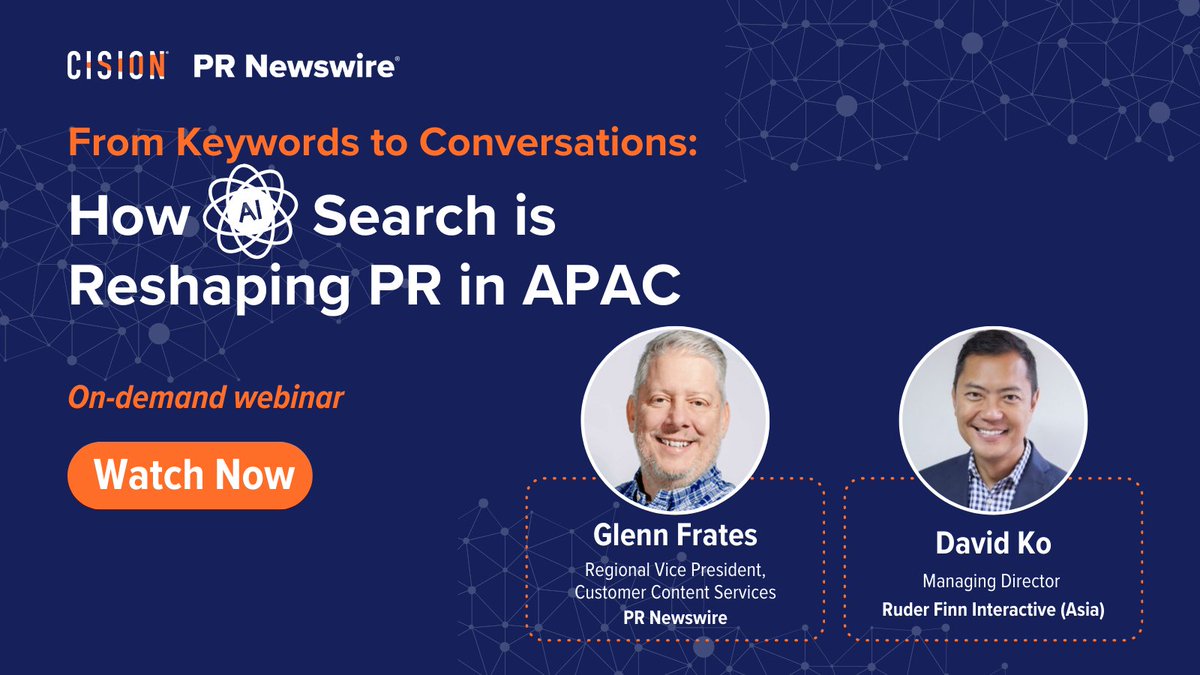Four Trends: How the AI Era is Transforming PR and Communications

The rise of AI is reshaping the foundations of public relations and communications. Audiences are changing how they search, consume, and engage with information. They are clicking less, dividing into micro-communities, and relying more on AI to pre-filter brand options. To lead in this evolving landscape, you need a strategy built for AI-first discovery, zero-click interactions, and precise engagement.
At PR Newswire event recently, RFI ‘s managing director David Ko shared four key trends defining the future of PR and communications:
Trend 1: Shifting User Behavior
Search is no longer about lists of links. With tools like Google’s Search Generative Experience (SGE), synthesized answers are presented directly at the top of the page. Conversation-driven platforms like Perplexity and ChatGPT Search favor natural language interactions over traditional keyword-based queries.
Additionally, nearly half of Gen Z now uses YouTube, TikTok and Instagram as their primary search engines. This signals a clear shift: people want instant, conversational answers that feel trusted and complete. Brands need to adapt by providing concise, authoritative, and conversational content that meets this demand.
Trend 2: The Rise of Zero-Click Journeys
A growing number of searches now end without a click to a website. AI-generated summaries often provide users with all the information they need directly within search results. In this environment, website traffic is no longer the sole marker of success.
Instead, your brand’s value depends on its presence, accuracy, and prominence within AI-generated results. Ensuring your brand is cited in those summaries can significantly enhance credibility and perceived value.
Trend 3: Fragmentation of the Media Landscape
Mass media moments are being replaced by hyper-personalized feeds. Algorithms now curate unique content experiences for every individual, leading to the growth of niche communities and the decline of shared, universal experiences.
To succeed, brands must think small to scale big. Modular storytelling is key. By creating adaptable content that aligns with the norms and language of individual micro-audiences, you can remain relevant while maintaining a consistent core narrative.
Trend 4: AI as the Gatekeeper of Brand Choice
AI is quickly becoming the intermediary between your brand and your audience. AI assistants now recommend, compare, and rank products without ever directing users to your site. Auto-generated reviews and curated lists heavily influence consumer decisions.
Your visibility in this landscape depends on how well your brand interacts with AI systems. If AI platforms lack accurate, up-to-date information about your brand, your audience won’t find you either.
Adapting with the SOME Framework
To thrive in this new era, you need a clear strategy. The SOME framework — Structure, Optimize, Measure, Expand — provides a roadmap for navigating the AI-dominated landscape.
S — Structure
- Make your content AI-readable using clear hierarchies, concise factual statements, and Schema.org markup.
- Create AI-ready assets that are structured, verified, and frequently updated (e.g., FAQs, Q&As, explainers, and so on).
- Build FAQ hubs that answer real natural-language questions directly.
- Design modular content that can be repurposed for different platforms and contexts while keeping the core message intact.
- Map your audience into deep segments to guide content architecture and channel priorities.
O — Optimize
- Ensure inclusion in AI-generated answers by creating clear, authoritative, and verifiable content.
- Collaborate with micro-influencers and community leaders to boost trust and relevance in niche environments.
- Use AI tools to personalize content formats and messaging for different audience segments.
M — Measure
- Track KPIs that reflect performance in zero-click environments. Focus on brand mentions, accuracy, sentiment, and contextual relevance within AI results.
- Regularly query AI platforms about your brand, topics, and products to identify errors, biases, or gaps in representation, and quickly correct inaccuracies or outdated information using third-party tools such as RFI’s AISEO.
- Measure inclusion and citation rates in AI summaries and conversational platforms to gauge your share of presence.
E — Expand
- Build direct-to-audience channels like newsletters, communities, and messaging platforms to establish deeper relationships.
- Engage niche audiences through unconventional channels such as podcasts, citizen journalists, reviewer sites, and so on.
- Leverage partnerships with AI platforms to unlock new discovery opportunities where your audience is already making decisions.
The Way Forward
The path is clear: structure your content for AI, optimize for inclusion, measure what matters in this new paradigm, and expand where decisions happen. This is the moment to embrace the future of communications. The brands that adapt with precision and purpose will set the pace for the next decade.